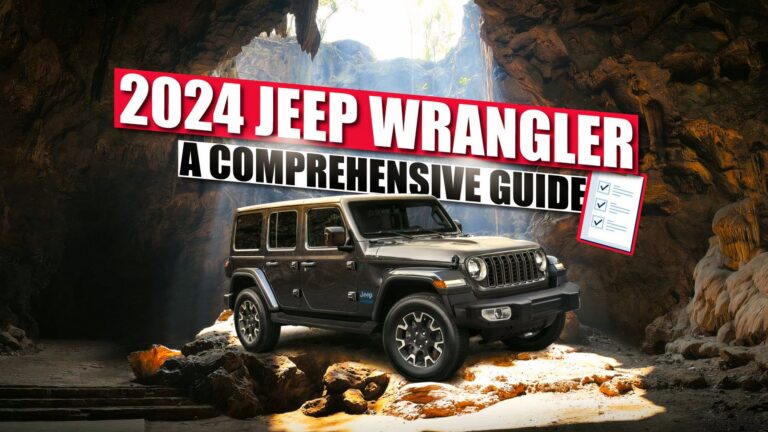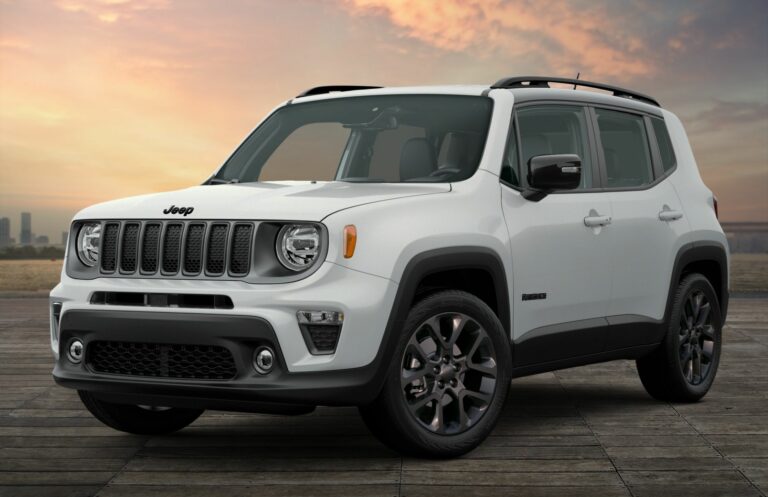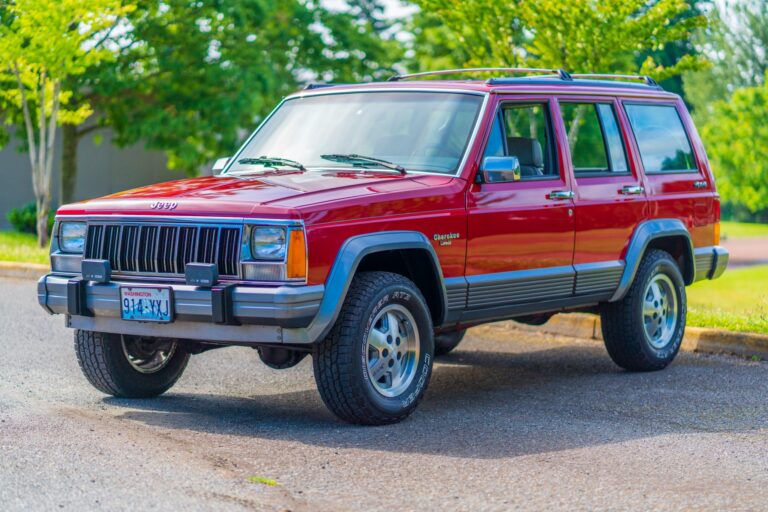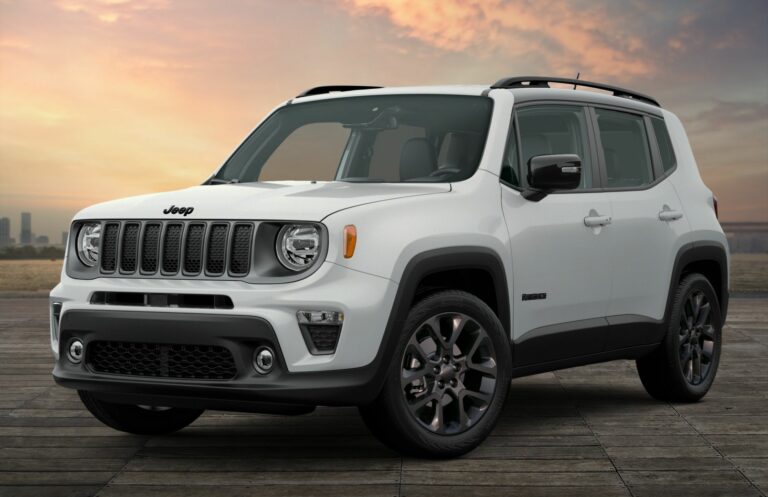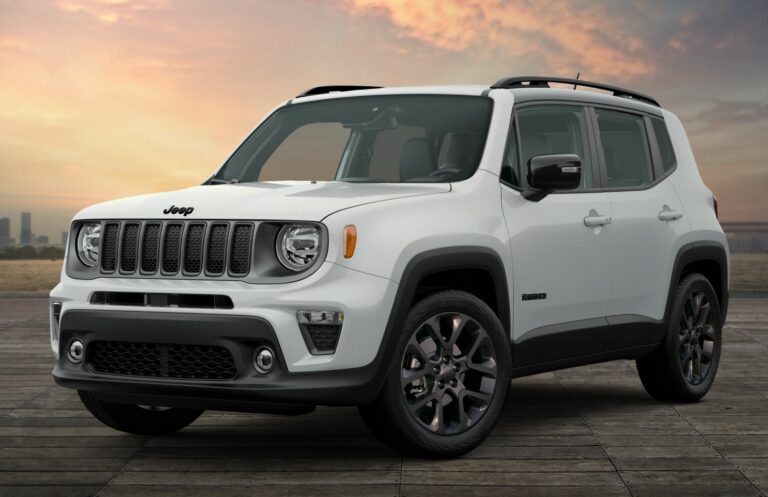The Iconic Cover: Unpacking the Wrangler Jeep Hood
The Iconic Cover: Unpacking the Wrangler Jeep Hood jeeps.truckstrend.com
The Jeep Wrangler. A name synonymous with adventure, off-road prowess, and an unmistakable silhouette. While its open-air freedom and rugged capability often steal the spotlight, a seemingly simple component plays a far more significant role than many realize: the Wrangler Jeep Hood. More than just a piece of sheet metal covering the engine, the Wrangler hood is a crucial blend of engineering, aesthetics, and functionality. It protects the beating heart of the vehicle, contributes significantly to its legendary styling, and serves as a prime canvas for customization. For both the casual observer and the seasoned off-roader, understanding the nuances of the Wrangler hood reveals a deeper appreciation for this automotive icon.
In this comprehensive guide, we will delve into every facet of the Wrangler Jeep hood, exploring its core functions, the materials that define its durability, its critical role in thermal management, and the vast universe of aftermarket options. We’ll provide practical advice on maintenance, address common issues like the infamous "hood flutter," and offer insights into making informed decisions about this vital component. Whether you’re a proud Wrangler owner, an aspiring Jeeper, or simply curious about what makes this vehicle so special, prepare to uncover the depth and importance of the Wrangler’s defining cover.
The Iconic Cover: Unpacking the Wrangler Jeep Hood
More Than Just Metal: The Core Functionality and Design of the Wrangler Hood
At its most fundamental, the Wrangler Jeep hood serves as a protective barrier. Beneath its surface lies the intricate network of the engine, transmission components, electrical systems, and fluids that power the vehicle. The hood shields these vital elements from the harsh realities of the road and trail – rocks, debris, water, mud, and extreme weather conditions. Without a robust and properly sealed hood, the Jeep’s longevity and performance would be severely compromised.
Beyond protection, the hood’s design is intrinsically linked to the Wrangler’s identity. Its flat, wide surface, punctuated by the signature seven-slot grille below, is instantly recognizable globally. This classic design is not merely for show; it harks back to the Jeep’s military roots, prioritizing functionality and rugged simplicity. The forward-tilting mechanism, secured by external latches, offers unparalleled access to the engine bay, a critical feature for maintenance, repairs, and the myriad modifications Jeep owners love to perform. While modern automotive design often prioritizes sleek aerodynamics, the Wrangler hood embraces its boxy, utilitarian heritage, a testament to its enduring purpose-built philosophy. Its robust construction also provides a stable platform for mounting accessories like high-lift jacks, trail lights, or even shovel and axe mounts, further enhancing its versatility for off-road adventures.
Built to Endure: Materials, Construction, and Durability
The materials and construction of a Wrangler Jeep hood are critical to its ability to withstand the demanding environments Jeeps are designed for. Historically, and for many generations including the popular JK (2007-2018), Wrangler hoods have been constructed primarily from steel. Steel offers excellent strength, impact resistance, and is relatively inexpensive to manufacture. However, steel is susceptible to rust if its protective coatings are compromised, and it adds significant weight.
With the introduction of the JL Wrangler (2018-present), Jeep engineers made a significant shift, utilizing aluminum for the hood. This move was primarily driven by the need to reduce overall vehicle weight to improve fuel economy and meet stricter emissions standards, without sacrificing strength. Aluminum is lighter than steel, inherently more resistant to corrosion (though still prone to galvanic corrosion if not properly isolated from other metals), and can be engineered to offer comparable stiffness and dent resistance for its weight.

The aftermarket landscape introduces even more material options:
- Aftermarket Steel: Often thicker gauge than OEM, designed for extreme durability or specific aesthetic modifications.
- Aftermarket Aluminum: Similar benefits to OEM aluminum but often with enhanced styling or ventilation.
- Fiberglass: A popular choice for custom hoods. Fiberglass is lightweight, easy to mold into complex shapes (allowing for aggressive scoops and vents), and relatively inexpensive. However, it can be more brittle than metal and prone to cracking under severe impact.
- Carbon Fiber: The ultimate lightweight option. Carbon fiber hoods offer exceptional strength-to-weight ratios but come at a premium price. They are primarily chosen for performance applications or high-end custom builds.

When considering materials, durability is paramount. A well-constructed hood, regardless of material, must withstand vibrations, temperature extremes, minor impacts from trail debris, and the constant exposure to the elements. Proper surface treatment, such as e-coating, primer, and paint, is essential for corrosion protection and longevity.
Keeping Cool Under Pressure: Ventilation and Thermal Management

For a vehicle designed to crawl over rocks at low speeds, pull heavy loads, or traverse deserts, effective thermal management is crucial. The engine bay of a Jeep Wrangler can become incredibly hot, especially during strenuous off-roading or in hot climates. This heat can lead to decreased engine performance, premature wear on components, and even overheating. This is where the hood plays a vital role in ventilation.
While factory Wrangler hoods, particularly on older models, often feature minimal integrated ventilation (beyond the basic grille opening), the aftermarket has fully embraced the need for improved airflow. Many aftermarket hoods incorporate:
- Heat Extractors/Vents: Strategically placed openings, often near the back of the hood or over key engine components, designed to allow hot air to escape the engine bay. These are crucial for preventing heat soak.
- Ram Air Scoops: Forward-facing openings that force cool, ambient air directly into the air intake system. This can lead to a slight increase in horsepower and improve combustion efficiency, especially at higher speeds.
- Power Domes: While primarily aesthetic, larger power domes can sometimes create more volume within the engine bay, allowing for slightly better air circulation, or provide clearance for larger engines/modifications.
Improved hood ventilation offers several benefits: reduced under-hood temperatures, extended life for rubber and plastic components, and potentially better engine performance, especially in demanding conditions. For Jeepers who push their vehicles hard, investing in a hood with enhanced thermal management features is a practical and highly beneficial upgrade.
Your Canvas for Adventure: The World of Aftermarket Wrangler Hoods
The aftermarket industry for Jeep Wranglers is vast, and the hood is one of the most popular components to customize. Aftermarket hoods offer a blend of aesthetic enhancement, improved functionality, and a chance for owners to truly personalize their vehicle.
Types of Aftermarket Hoods:
- Vented Hoods: Designed primarily for heat extraction. Examples include the AEV Heat Reduction Hood or designs with multiple vents.
- Power Dome/Bulge Hoods: Feature a raised section in the center, often for a more aggressive look, or to accommodate larger engine components.
- Ram Air Hoods: Incorporate scoops that direct cool air to the engine’s air intake.
- Flat/Clean Hoods: Offer a minimalist aesthetic, sometimes chosen for a more classic or utilitarian look.
- Off-Road Specific Hoods: May feature integrated mounting points for lights, accessories, or even a built-in air compressor.
Choosing the Right Aftermarket Hood:
- Purpose: Are you prioritizing aesthetics, improved ventilation, or both?
- Material: Consider the trade-offs between steel, aluminum, fiberglass, and carbon fiber in terms of weight, durability, and cost.
- Fit and Finish: Reputable brands are crucial. Poorly manufactured hoods can lead to alignment issues, unsightly gaps, and paint problems. Read reviews and look for hoods that claim OEM-like fitment.
- Paint: Most aftermarket hoods come unpainted (e-coated or gel-coated). Factor in the cost of professional painting to match your Jeep’s color.
- Installation: While some are bolt-on, others might require minor modifications. Professional installation is often recommended for perfect alignment and finish.
- Brand Reputation: Stick to well-known and respected aftermarket manufacturers (e.g., AEV, DV8 Offroad, Rugged Ridge, GenRight) to ensure quality and support.
Practical advice: Don’t just pick a hood based on looks. Consider your driving environment and how improved ventilation might benefit your engine. Also, remember that a new hood often requires new hood latches and possibly new hood prop rods or gas struts.
Taming the Flutter: Latches, Hinges, and Security Solutions
A common complaint among JK and JL Wrangler owners is "hood flutter" – a noticeable vibration or shaking of the hood at highway speeds, especially in windy conditions or when passing large trucks. This phenomenon is primarily attributed to the flexible, rubber factory hood latches that allow for slight movement, combined with the aerodynamic forces acting on the large, flat hood surface.
Solutions for Hood Flutter:
- Aftermarket Hood Latches: This is the most effective and popular solution. Replacing the stock rubber latches with heavy-duty, often metal, locking or non-locking aftermarket latches significantly reduces hood movement. These latches provide a much firmer hold on the hood, virtually eliminating flutter. Brands like Daystar, Rugged Ridge, and Bolt Lock offer excellent options.
- Hood Catches/Pins: Some owners opt for racing-style hood pins for a very secure, no-flutter solution, though this is a more aggressive aesthetic and installation.
Hinges and Security:
The hood hinges are robustly designed to support the hood’s weight and allow for smooth opening and closing. While less prone to issues than latches, they should be regularly inspected for wear or corrosion. Proper lubrication can ensure smooth operation.
For added security, especially if you have valuable under-hood modifications or live in an area prone to theft, locking hood latches are an excellent investment. These latches typically use a key or integrate with your Jeep’s existing key system, preventing unauthorized access to your engine bay and anything stored within it.
From Installation to Longevity: Practical Care and Maintenance
Maintaining your Wrangler Jeep hood is straightforward but essential for its appearance and longevity.
Routine Care:
- Cleaning: Wash your hood regularly with automotive soap and water, just like the rest of your vehicle. Pay attention to vents and scoops, ensuring they are free of debris.
- Waxing/Sealing: Apply a quality automotive wax or paint sealant periodically. This protects the paint from UV damage, minor scratches, and environmental contaminants, and makes cleaning easier.
- Inspect Latches and Hinges: Regularly check the hood latches for wear, cracks (especially rubber ones), and proper function. Ensure hinges are free of rust and operate smoothly. Lubricate hinges with a silicone spray or white lithium grease as needed.
Installation Considerations (for replacement hoods):
- DIY vs. Professional: Swapping a hood is generally a two-person job due to its size and weight. While mechanically simple (unbolt old, bolt on new), achieving perfect alignment and gap consistency requires patience and a good eye. If you’re installing a painted hood, professional installation might be worth it to prevent accidental damage to the paint.
- Pre-Fitment: Always test fit an aftermarket hood before painting. This allows you to identify any fitment issues and address them without damaging a costly paint job.
- Hardware: Ensure you have all necessary hardware (bolts, washers, latch components) before beginning. Some aftermarket hoods may reuse OEM hardware, while others come with their own.
Proper care and attention will ensure your Wrangler’s hood not only looks great but also continues to perform its vital protective and functional roles for years of adventures to come.
Investing in Your Jeep’s Crown: Estimated Hood Pricing
The cost of a Wrangler Jeep hood can vary dramatically depending on whether it’s an OEM replacement, an aftermarket unit, the material, and the specific features. The following table provides estimated price ranges for various hood types and related accessories. These prices are for the hood itself and typically do not include shipping, painting, or installation costs, which can add significantly to the total.
| Category | Description | Estimated Price Range (USD) | Notes |
|---|---|---|---|
| OEM Replacement Hood | Brand new, unpainted hood directly from Jeep (or Mopar equivalent) | $600 – $1,200+ | Varies by JK/JL model year and material (steel vs. aluminum). Does not include paint or installation. |
| Aftermarket Standard Hood | Unpainted, direct replacement (steel or aluminum) with OEM-like styling | $400 – $800 | Good for accident replacement or simply upgrading material. Requires painting. |
| Aftermarket Vented/Power Dome Hood | Unpainted, steel or fiberglass, with integrated heat extractors or power bulge | $600 – $1,500+ | Popular for aesthetics and improved cooling. Fiberglass options tend to be on the lower end, steel on the higher. Requires painting. |
| Aftermarket Ram Air Hood | Unpainted, steel or fiberglass, with functional ram air scoop | $700 – $1,800+ | Designed to improve engine air intake. Often includes ducting. Requires painting. |
| Premium Aftermarket Hood | High-end designs, specialized materials (e.g., carbon fiber), advanced features | $1,500 – $3,500+ | Primarily for performance or show builds. Carbon fiber is the most expensive. May come in raw carbon finish or require clear coat/paint. |
| Used/Salvage Hood | From a salvage yard or private seller | $200 – $700 | Condition varies wildly. May require bodywork, paint, and potentially missing hardware. Buyer beware. |
| Hood Latches (Aftermarket) | Set of 2, heavy-duty metal, non-locking | $50 – $150 | Essential for reducing hood flutter. |
| Hood Latches (Locking) | Set of 2, heavy-duty metal, lockable for security | $100 – $250 | Provides added security for under-hood components. |
| Hood Struts/Gas Shocks | Replaces traditional prop rod for easier hood opening | $60 – $120 | A convenient upgrade for hands-free hood support. |
| Hood Decals/Graphics | Vinyl wraps or printed graphics for customization | $50 – $300+ | Highly variable based on size, complexity, and quality. A cost-effective way to personalize an existing hood. |
| Professional Paint Job | To match vehicle color, including prep work | $400 – $1,000+ | This is a significant additional cost. Varies based on shop rates, color matching complexity, and quality of paint. |
| Professional Installation | Labor for hood swap and alignment | $150 – $400+ | Depends on shop rates and complexity. Worth considering for a perfect fit and finish, especially for painted hoods. |
Note: Prices are estimates and subject to change based on market conditions, brand, specific model, and location.
Your Hood Questions Answered: Frequently Asked Questions (FAQ)
Q1: What is "hood flutter" on a Jeep Wrangler, and how can I fix it?
A1: Hood flutter is the noticeable shaking or vibration of the hood, especially on JK and JL Wranglers, at highway speeds or in windy conditions. It’s caused by flexible factory rubber hood latches. The most common fix is to replace the stock latches with heavy-duty aftermarket metal latches (locking or non-locking), which provide a much more secure hold.
Q2: Are aftermarket hoods easy to install myself?
A2: Swapping a hood is generally a straightforward bolt-on process, but it requires two people due to the hood’s size and weight. Achieving perfect alignment can be tricky. If you’re installing an unpainted hood, a DIY approach is feasible. If it’s a painted hood, or if you’re unsure, professional installation is recommended to prevent damage and ensure a perfect fit.
Q3: Do aftermarket hoods come painted to match my Jeep?
A3: Most aftermarket hoods come unpainted, typically with an e-coat or gel coat (for fiberglass) ready for prep and paint. You will need to factor in the cost of professional painting to match your Jeep’s color, which can be a significant additional expense.
Q4: Will a vented hood really help with engine cooling?
A4: Yes, a properly designed vented or heat-extraction hood can significantly help reduce under-hood temperatures, especially during strenuous off-roading or in hot climates. By allowing hot air to escape more efficiently, it can prevent heat soak and extend the life of under-hood components.
Q5: Is it worth upgrading to an aluminum hood if my Jeep has a steel one?
A5: Upgrading from steel to aluminum (if available for your model) primarily offers weight savings, which can slightly improve fuel economy and performance. Aluminum is also more corrosion-resistant. However, it’s generally more expensive. The decision depends on your budget and priorities.
Q6: Can I put a hood from a different Wrangler generation (e.g., JK hood on a TJ) on my Jeep?
A6: No, hoods are specific to the Wrangler generation they are designed for (e.g., YJ, TJ, JK, JL). The dimensions, hinge points, latch points, and overall design are different and are not interchangeable between generations.
Q7: How do I maintain my Wrangler hood to prevent rust or paint damage?
A7: Regular washing and waxing/sealing are crucial. Inspect for chips or scratches and address them promptly with touch-up paint to prevent rust (on steel hoods) or further paint deterioration. Also, keep hinges lubricated and latches clean.
The Enduring Legacy of the Wrangler Hood
The Wrangler Jeep hood is more than just a functional component; it’s a cornerstone of the vehicle’s identity and an embodiment of its spirit. From its rugged military origins to its current status as a highly customizable icon, the hood has evolved while retaining its core purpose: protecting the engine and defining the Jeep’s unmistakable profile.
Whether it’s the factory-installed steel or aluminum shield, a customized vented masterpiece, or simply an upgraded set of latches to tame the infamous flutter, the hood profoundly impacts the Wrangler experience. It speaks to the vehicle’s durability, its adaptability, and the boundless passion of its owners. As the Jeep Wrangler continues its journey into the future, its hood will undoubtedly remain a symbol of adventure, capability, and the freedom of the open road – or trail.

